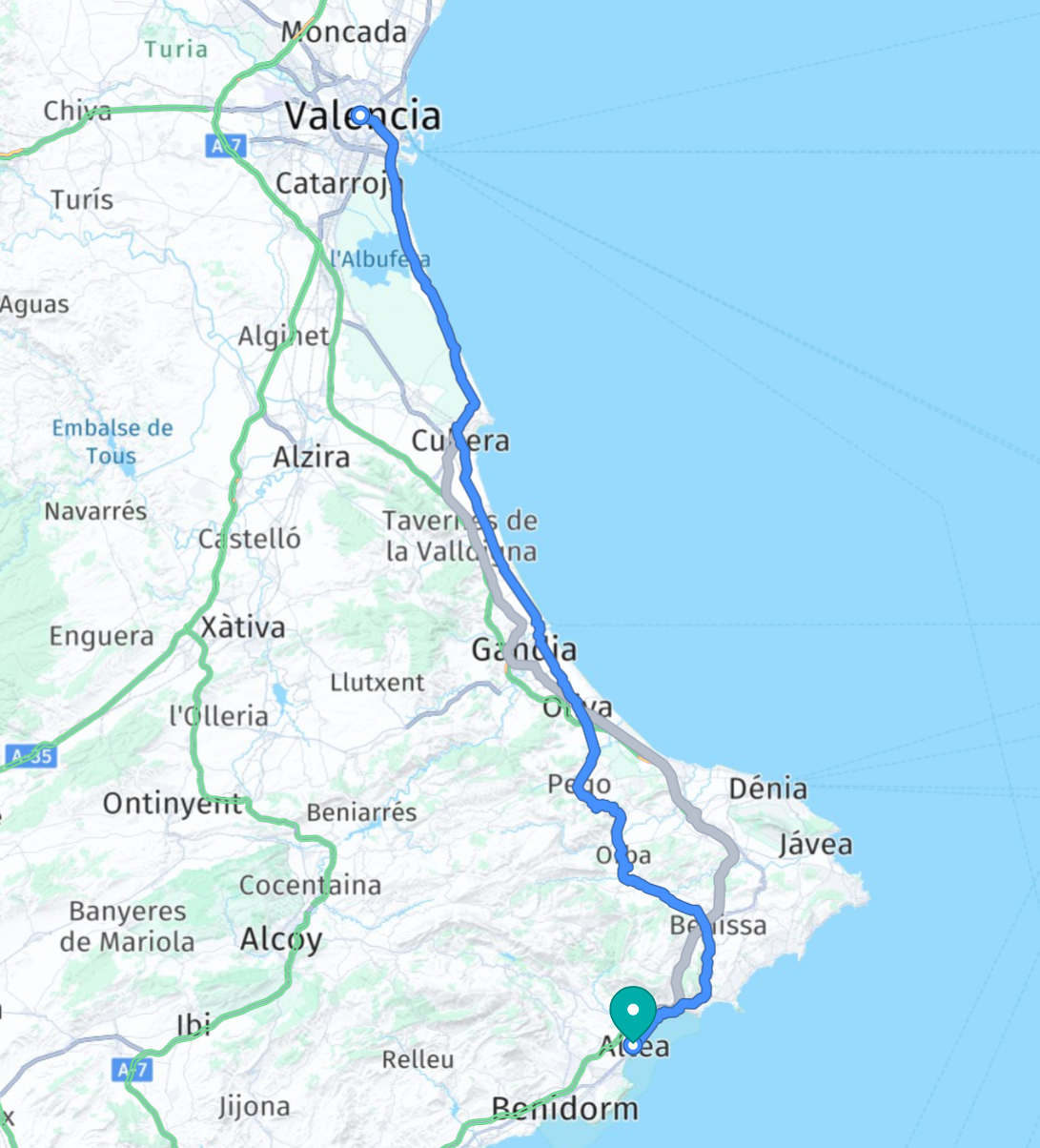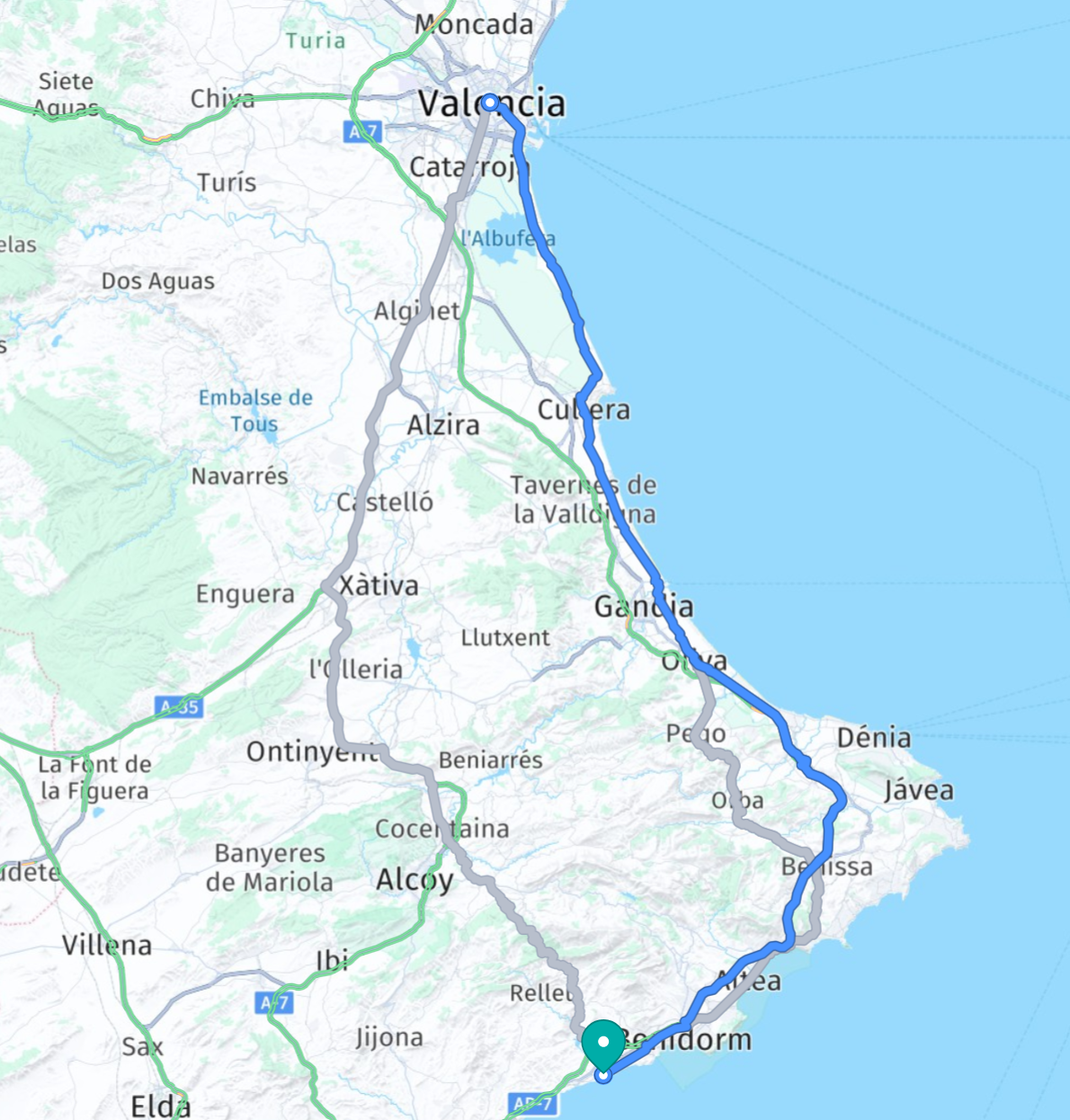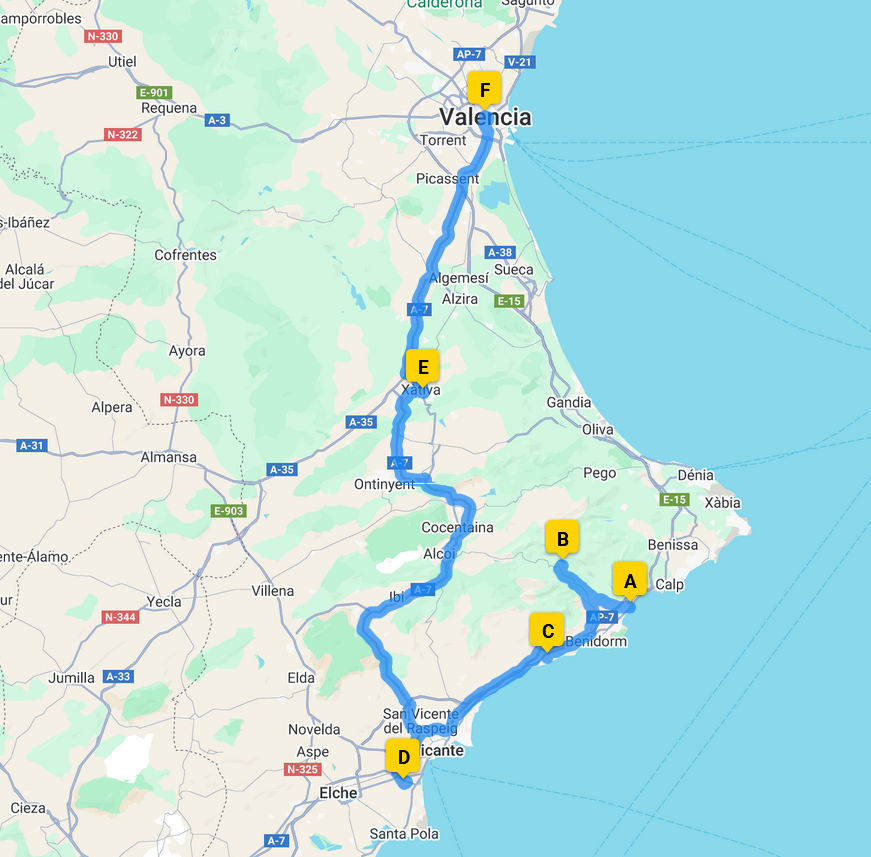Altea
At present, the economy of Altea is based on tourism, which started to grow in the 1950s because of its good weather, beaches and the labyrinthine streets with whitewashed house-fronts that characterize the town. Altea is protected on the north by the bluffs of the Serra de Bèrnia, creating an especially mild microclimate. Its seafront esplanade is planted with palms.
This maze of cobbled narrow and crooked streets with glimpses of the bay is one of the better features of the town. Other sights include the church of La Mare de Déu del Consol ("Our Lady of Solace"), easily identifiable by its picturesque blue and white domes, tiled with glazed ceramics. There are numerous quaint restaurants near the church, some with a view over the Mediterranean. Note that, if visiting by car, you will need to park several blocks away from the church area as the immediately surrounding area is either off limits to cars and/or the streets are so narrow and steep (or have stairs) that cars cannot pass.
en.wikipedia.org


































 >
>
